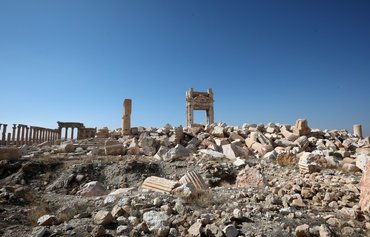The recent attack in the Yemeni city of Taiz on the shrine of Muslim cleric Abdulhadi al-Sudi was based on a misguided ideology that seeks to destroy the country's civilisation and heritage, clerics and officials told Al-Mashareq.
On the evening of July 29th, armed extremists bombed the site in the old section of the city, destroying the shrine's dome and the adjacent mosque, local media reported.
No group has yet claimed the attack, which some blame on the "Islamic State of Iraq and the Levant" (ISIL) and others on al-Qaeda, with some outlets reporting that a small group of unaffiliated religious radicals may be responsible.
Al-Sudi’s shrine had been vandalised about two years ago by extremists.
Yemen's Ministry of Culture, the General Authority for Antiquities and Museums and the Ministry of Religious Endowments and Guidance each condemned the attack.
"This criminal and cowardly act is rooted in the deep hatred that these terrorist groups have towards sacred sites, as well as beauty itself, and Yemen’s prominent place in spreading religious jurisprudence since the dawn of the Islamic era," the General Authority for Antiquities and Museums said in a statement.
The statement also highlighted al-Sudi's elevated position and contributions as one of the key figures of Sufism in Taiz and Yemen.
Authority head Muhannad al-Sayani said he believes ISIL is responsible for the crime "as members of this group control the area in which the shrine is located".
“Bombing shrines and religious sites is a result of wrong religious mobilisation by a certain group, which has bombed shrines in other provinces and represents aggression against our heritage and civilisation," he told Al-Mashareq.
“This group or this ideology is responsible for bombing several shrines and domes across several provinces, including Aden, Hadramaut, Lahaj and al-Dhali,” he said, noting that these monuments are centuries old and had remained intact until the emergence of ISIL.
"This group represents the largest threat against Yemeni civilisation because it is difficult to [dissuade] extremist elements whose brains have been filled with misguided religious ideas encouraging them to commit these acts," he said.
Al-Sayani stressed the need to confront this ideology through a national awareness campaign so that children can be taught to build rather than destroy.
'We condemn this barbaric act'
“Prior to the bombing of the shrine of al-Sudi in Taiz, shrines in al-Mukalla, Lahaj and other areas also had been bombed," said Deputy Minister of Culture at the Department of Antiquities, Museums and Manuscripts Omat al-Malik al-Thawr .
This is part of a campaign of sectarian mobilisation and religious ignorance, an ideology al-Qaeda and ISIL both share, she told Al-Mashareq.
“We know that this mosque is that of a Sunni cleric," she said, referring to al-Sudi's shrine. "We condemn this barbaric act against civilisation which seeks to destroy monuments and mosques."
"This makes [the attackers] enemies of life, civilisation and religion because their target is not just stone but monuments and a prominent religious site in Taiz," she said.
According to al-Thawr , the attacks bear the hallmark of al-Qaeda, which instructs its followers to destroy monuments.
“A political solution and the establishment of a government will prevent these elements from implementing their operations, which are considered religious terrorism," she said.
A misunderstanding of Islam
“This is an aggression against the sanctity of the dead in Islam, whether these corpses are placed under domes, in shrines or in graves," said Yemen Scholars Association member Sheikh Yahya al-Najjar.
“God and his messenger have forbidden such aggression”, he told Al-Mashareq, describing those that issue false fatwas as “terrorists and extremists”.
“God has sanctified the dead whether they are Muslim, Christian, Jewish or of any other faith, so it is prohibited to vandalise their graves or to take items from these graves and shrines," he added.
Al-Najjar said the gravestones and structures identifying a shrine, dome or grave are artefacts that people have become accustomed to placing.
“Muslims used to place domes atop graves whose owners were righteous among their people and during their time," he explained. "It was out of love that people built these structures on their graves."
Visiting such sites “is in response to the Prophet’s command for his followers to visit graves, and they actually visit the dome, which is nothing more than stone and a symbol that people do not worship, as alleged by extremists”, he said.
"Those who bomb graves, shrines and domes are wrong and have a mistaken understanding of and behaviour towards Islam," he added.

![Yemenis examine the site of Sheikh Abdulhadi al-Sudi in Taiz after it was destroyed by religious radicals. [Photo courtesy of Yemen's commission for antiquities and museums]](/cnmi_am/images/2016/08/05/5974-Yemen-shrine-attack-600_384.jpg)






Those have been planted by Saudi Arabia and this is the Wahhabi ideology. Al Saud had destroyed the shrines and graves of the Companions before them.
Reply1 Comment(s)